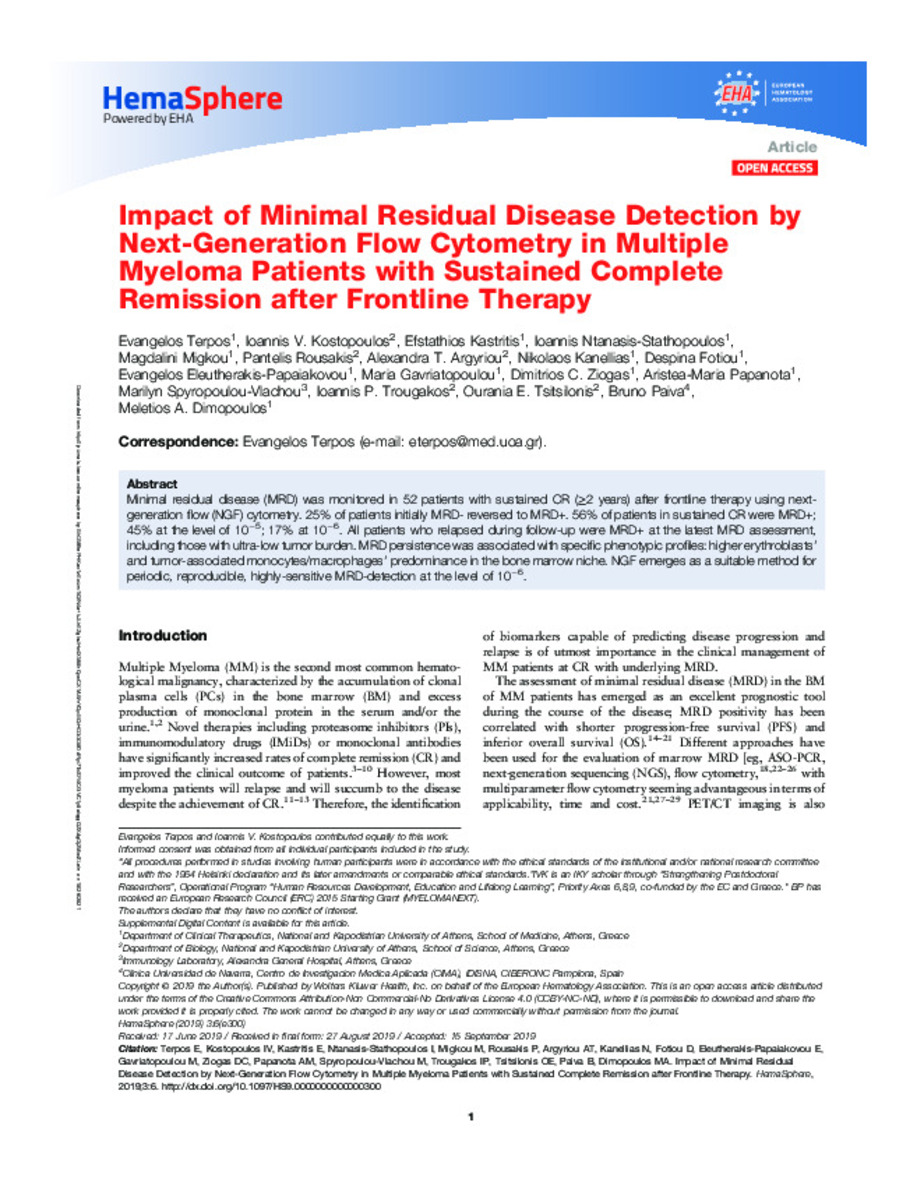Impact of minimal residual disease detection by next-generation flow cytometry in multiple myeloma patients with sustained complete remission after frontline therapy
Palabras clave :
Minimal residual disease (MRD)
Phenotypic profiles
Suitable method
Next-generation flow (NGF)
Fecha de publicación :
2019
Editorial :
Ovid Technologies (Wolters Kluwer Health)
Nota:
This is an open access article distributed
under the terms of the Creative Commons Attribution-Non Commercial-No Derivatives License 4.0 (CCBY-NC-ND)
Cita:
Terpos, E. (Evangelos); Kostopoulos, I.V. (Ioannis V.); Kastritis, E. (Efstathios); et al. "Impact of minimal residual disease detection by next-generation flow cytometry in multiple myeloma patients with sustained complete remission after frontline therapy". HemaSphere. 3 (6), 2019, e300
Aparece en las colecciones:
Estadísticas e impacto
0 citas en

0 citas en

Los ítems de Dadun están protegidos por copyright, con todos los derechos reservados, a menos que se indique lo contrario.







